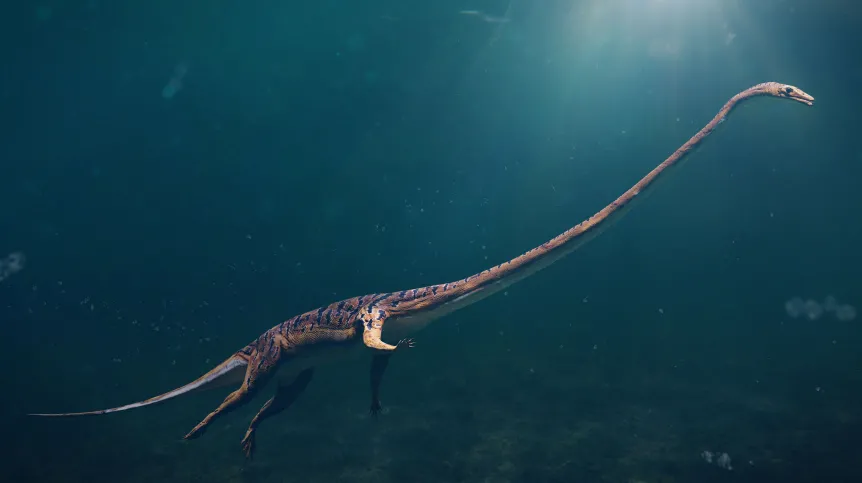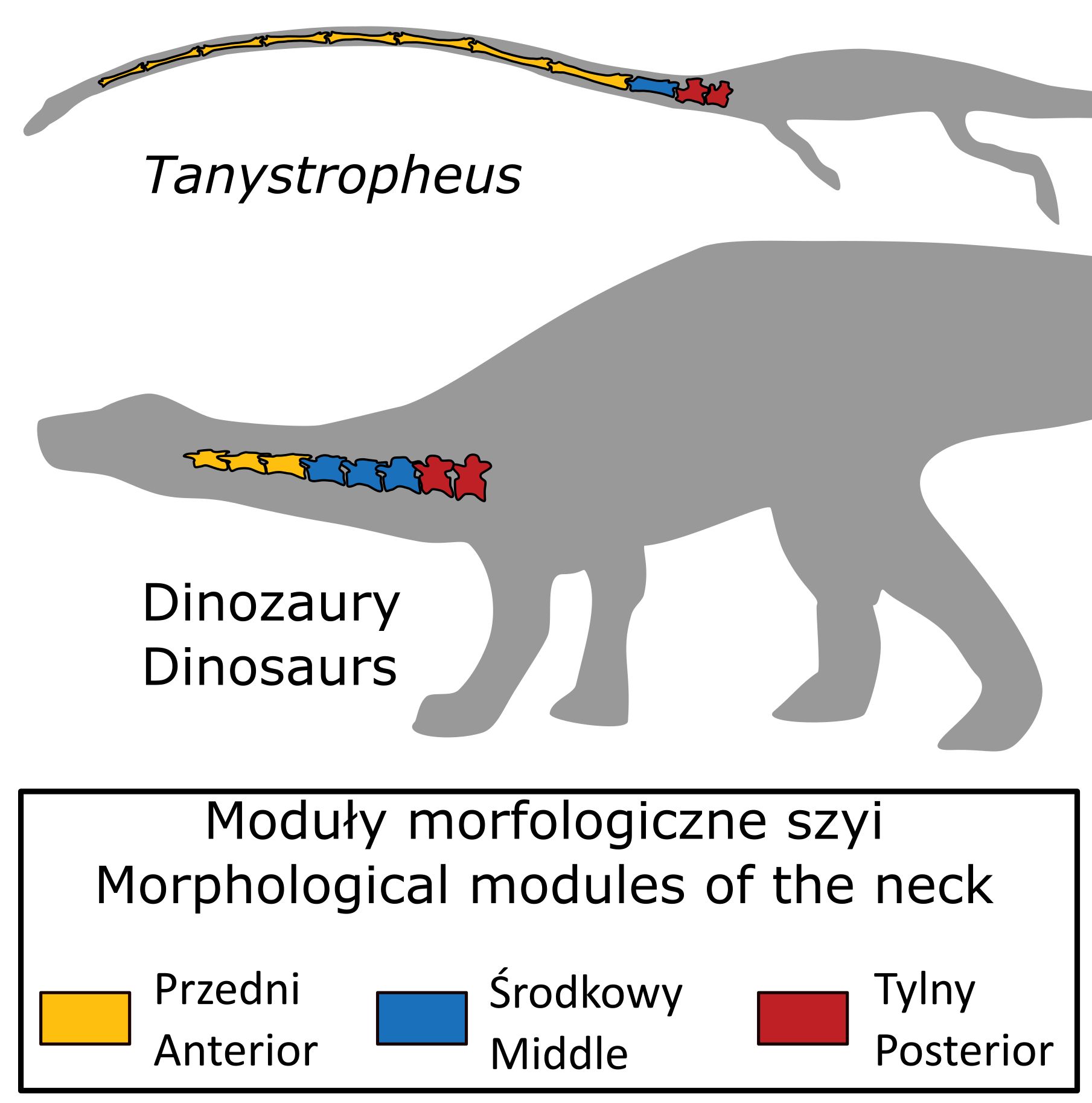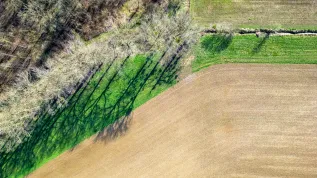
Neck elongation is not unusual among extinct reptiles. It usually involves more cervical vertebrae. However, Tanystropheus' extremely long neck consisted of only 13 vertebrae, but they were extremely elongated, show palaeontologists including researchers from the University of Warsaw.
Tanystropheus was a reptile that lived in the Triassic, approx. 240 million years ago - also in the lands of modern-day Poland (fossils have been found, for example, in Miedary, Silesia). It reached 6 meters in length and most likely lived in an aquatic environment. Its extremely long neck made up about half of its body.
The mystery of the unusual structure of its neck and the way it evolved has been explained by a team of researchers in the journal Royal Society Open Science.
Scientists showed that due to developmental limitations, Tanystropheus could not increase the number of its vertebrae, so it extremely lengthened the existing ones, reaching proportions not seen in other animals.
'Neck elongation itself is not unusual among reptiles, but it is usually associated with a significant increase in the number of cervical vertebrae. Tanystropheus did not have many vertebrae (13; other aquatic reptiles, e.g. plesiosaurs, could have over 70 of them), but they were extremely elongated, reaching the proportions of our limb bones', says the first author of the paper, Adam Rytel. The topic of the paper was the subject of research of his master's thesis, written under the supervision of Dr. Mateusz Tałanda at the Faculty of Biology of the University of Warsaw; today Rytel is a doctoral candidate at the Institute of Paleobiology of the Polish Academy of Sciences.
According to Rytel, unlike other long-necked aquatic reptiles, the number of presacral (cervical + dorsal) vertebrae in Tanystropheidae did not change. 'Instead, during the evolution of the animal, the neck elongation occurred through the elongation of individual vertebrae and the +shift+ of the dorsal vertebrae to the cervical spine', he says.
He adds that the neck itself was divided into three main sections with vertebrae of different shapes, similar to the modules found in the spine of today's animals, in which this differentiation results from the expression of specific genes.

'In Tanystropheus, the vertebrae newly incorporated into the cervical spine were in the anterior module, characterized by the greatest vertebral elongation. This further increased the length of the neck. But why didn't the number of presacral vertebrae simply increase in Tanystropheus? Most likely there was a developmental limitation that made this difficult or even impossible. The extreme elongation of individual vertebrae was therefore a method to +circumvent+ this obstacle, with strong evolutionary pressure promoting neck elongation’, says Rytel.
'The combination of these traits allows us to conclude that Tanystropheus had a completely unique anatomical structure, an extreme example of what evolution can create in very specific conditions', Rytel adds.
Tanystropheus is an archosauromorph - a relative of the ancestors of archosaurs, i.e. animals such as crocodiles and dinosaurs (including birds). Depending on the species, adult individuals reached sizes from 1.5 to over 6 meters in length. They probably lived in an aquatic environment, and their long necks allowed them to approach their prey unnoticed.
Tanystropheus was first described in the mid-19th century, and entire skeletons of these animals have been known since the 1930s. The fossils studied by palaeontologists came from sites including Miedary in Upper Silesia, Monte San Giorgio on the border of Italy and Switzerland, as well as China.
In the geological past, especially in the Mesozoic, i.e. the age of dinosaurs lasting from 252 to 66 million years ago, several groups of long-necked aquatic reptiles appeared independently. The most important and best-known group were the plesiosaurs. Moreover, next to the described Tanystropheidae, there were also reptiles from the trachelosaurid family - however, in their case, long necks evolved by increasing the number of cervical vertebrae.
Today, long-necked aquatic reptiles no longer exist, the largest animals in today's seas and oceans are mammals, and in their case neck elongation is very difficult for genetic reasons. 'In reptiles, there was much greater plasticity in the development of this trait. However, seeing that long necks evolved independently in several groups of reptiles that lived throughout the entire Mesozoic, it is not certain that we will never see similar animals again. Especially that some water birds, e.g. swans, have relatively very long necks', says Rytel. (PAP)
PAP - Science in Poland, Agnieszka Kliks-Pudlik
akp/ bar/ mow/ kap/
tr. RL













